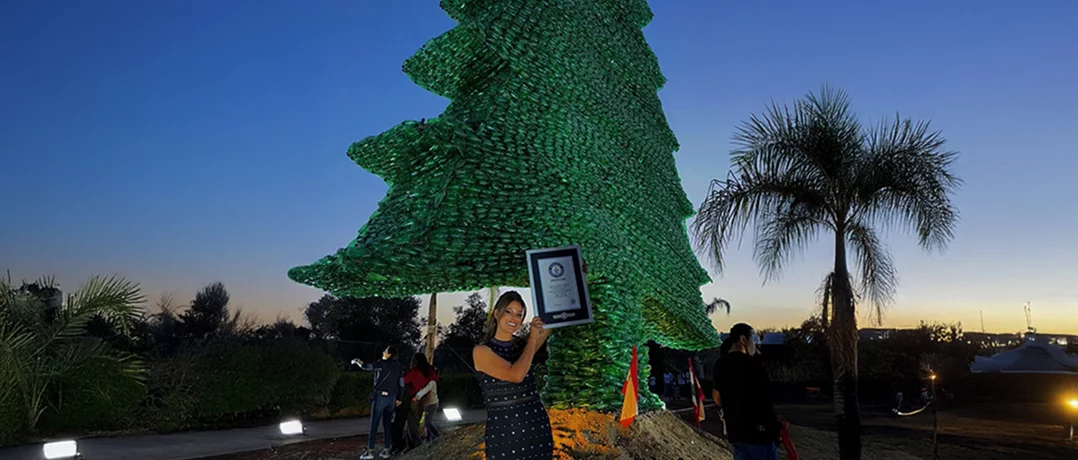Caroline Chaptini set a new Guinness Record with a 10-meter cedar tree built from 450,000 plastic bottles to highlight Lebanon’s waste crisis.
Caroline Chaptini breaks sixth Guinness Record with world’s largest plastic cedar tree
Caroline Chaptini breaks sixth Guinness Record with world’s largest plastic cedar tree


Lebanese environmental artist Caroline Chaptini has set her sixth Guinness World Record, this time for creating the world’s largest cedar tree built entirely out of plastic bottles. The 10-meter installation, unveiled in Amioun on Lebanon’s 82nd Independence Day, was constructed from 450,000 green plastic bottles collected with the help of volunteers.
In a country drowning in waste and lacking a functional recycling system, Chaptini’s work stands out as a rare civic initiative that merges environmental activism with national symbolism. The cedar tree, Lebanon’s most enduring emblem, becomes a commentary on what the country discards, and on how creativity can reshape crisis.
Chaptini began her Guinness journey in 2018 when she created the world’s largest Christmas tree made of plastic bottles. She continued to break records with the world’s largest crescent moon, the largest national flag built from recycled materials, a massive bottle-cap mosaic designed with SONY in Dubai, and the world’s largest plastic globe. Her newest achievement, a 10-meter-tall cedar tree, surpasses the previous record of 9 meters and reinforces her reputation as one of the region’s leading creative recyclers.
A monument with meaning
Chaptini says the tree’s height is symbolic: each meter represents roughly 1,045 square kilometers of Lebanon’s total land area (10,452 km²). The project was unveiled by the Amioun Municipality as part of Independence Day celebrations, turning a national symbol into an environmental call to action.
Lebanon generates more than 2,000 tons of waste per day, much of it plastic, and recycling rates remain among the lowest in the region. Most waste ends up burned, dumped, or landfilled without treatment. In that context, Chaptini’s work, though symbolic, has become a civic ritual of its own, reminding the public that environmental solutions in Lebanon are often built by citizens rather than institutions, and that creativity can still become a form of resistance.


